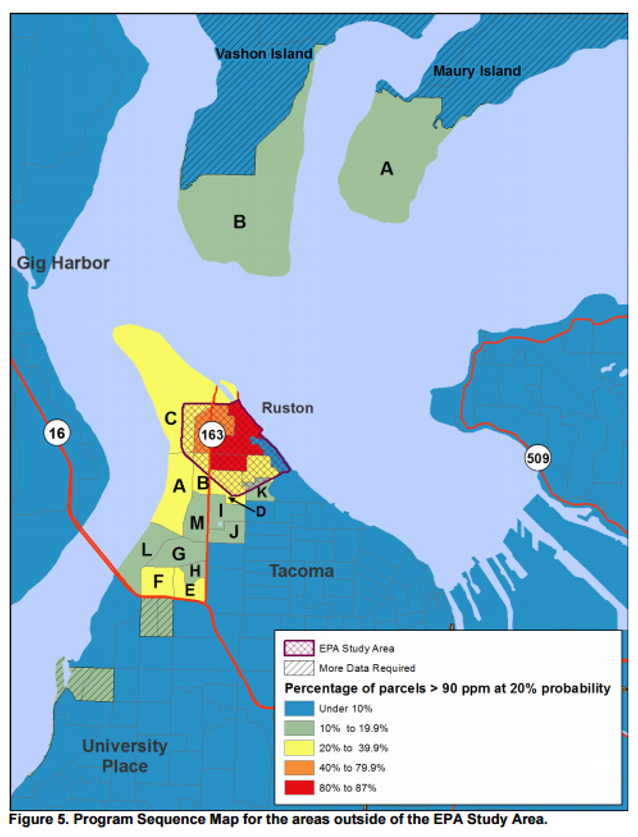ASARCO
Tacoma Smelter Plume Mapping Project
Client: Tacoma-Pierce County Health Department
Background
For almost 100 years, the Asarco Company operated a copper smelter in Tacoma, Washington State. Air pollution from the smelter settled on the surface soil over more than 2,600 square kilometers of the Puget Sound basin. As part of the Tacoma Smelter Plume project, there have been a number of studies looking at soil arsenic contamination, leading to the collection of more than 5,000 surface soil samples over the years. The present study aimed to pool all of the sampling results to create a model that can be used to further prioritize areas for additional sampling and remediation since not enough money is available to clean all residential parcels.
Objectives
The objectives of this sub-contract were:
- to revise the existing mapping methodology-protocol to incorporate both wind rose information and field data in the geostatistical mapping of arsenic concentration estimates and the probability of exceeding specific arsenic levels,
- to design a sampling scheme that accommodates the resources available (i.e. number of samples) and criteria set by the client (e.g. target areas of largest uncertainty about arsenic concentrations or the probability of exceeding specific arsenic levels),
- to compare the power of different composite sampling design options when deciding whether the average arsenic concentration within a residential parcel exceeds or not a threshold of 90 or 100 ppm.
Results
A geostatistical approach was developed and implemented to: 1) incorporate wind rose information, elevation and field measurements in the geostatistical mapping of arsenic concentration estimates at the parcel level, and 2) compute the probability of exceeding specific arsenic levels at the parcel and block-group levels. A computer program was also written to allow the client to derive the probability that a fraction X of the parcels within any given block group exceeds a given Threshold T. Both parameters X and T are specified by the user who can choose multiple fractions and thresholds per run.

Publication
Goovaerts, P. 2012. TSP Mapping Project: Development of a geostatistical mapping methodology. Final report Available as attachment 2 of Final Program Design and Implementation Plan at https://fortress.wa.gov/ecy/publications/documents/1309081.pdf
Goovaerts, P. and G. Glass. 2014. Geostatistical modeling of the spatial distribution of surface soil arsenic around a smelter. Journal of the Japanese Society of Soil Physics, 128, 5-10.